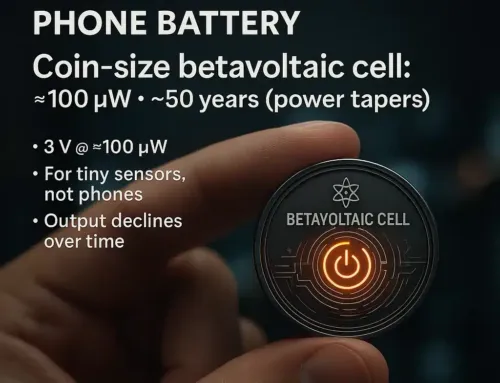
Approx. read time: 7 min.
Post: Exploring the RB5X: A Journey into the World of Personal Robotics
Exploring the RB5X: A Journey into the World of Personal Robotics
The RB5X, introduced in 1983 by RB Robot Corporation, stands as a pioneering example in the realm of personal robotics. This versatile and sophisticated robot was designed to be a multipurpose tool, serving educational, experimental, and practical applications in the home. It represented one of the earliest commercial implementations of autonomous mobile robotics (AMR) and was notable for its ability to learn from experience, thanks to its advanced sensory and programming capabilities.
Physical Features
The RB5X’s design is both functional and distinctive. It measures 13 inches in diameter and stands 23 inches tall, weighing about 24 pounds. The robot moves using two 4-inch diameter synthetic rubber drive wheels and two 2-inch diameter castors, allowing it to navigate smoothly across various surfaces. Its cylindrical body is capped with a transparent, dome-shaped top, which houses its electronics and optional components like a robotic arm.
Sensory and Interactive Capabilities
Equipped with an array of sensory inputs, the RB5X is adept at interacting with its environment. It features eight bumper panels around its base to detect physical obstacles, a photodiode for light detection, and a Polaroid Rangefinder sonar system that allows it to recognize and navigate around objects from a distance of 10 inches to 35 feet. This combination of tactile and sonar sensors enables the RB5X to move autonomously and avoid collisions.
The RB5X also includes a sonic transducer and optional voice/sound synthesis capabilities. These features allow it to produce speech, music, and various sounds, facilitating interactive communication with users. This capability is enhanced by an optional voice recognition system, which enables the robot to respond to spoken commands (cyberneticzoo.com) (Wikipedia) (The Old Robots).
Communication and Programming
One of the RB5X’s most remarkable features is its programmability. It is equipped with an INS8073 microprocessor and comes with 8K of memory, expandable to 16K. Users can program the robot using TinyBASIC or Savvy, and any home computer with an RS-232 communications interface can be used to download programs to the RB5X. This flexibility allows users to tailor the robot’s behavior to a wide range of tasks and applications.
The RB5X also supports dual RS-232 interfaces, enabling it to communicate with other devices or robots. This was particularly advanced for its time and allowed for greater integration into larger systems or networks (cyberneticzoo.com) (Wikipedia) (The Old Robots).
Additional Features
The RB5X’s modular design allows for various optional enhancements, making it a highly adaptable platform. Some of these options include:
- Voice/Sound Synthesis System: This enables the robot to produce programmed speech and sounds.
- Robotic Arm/Hand: This optional arm provides five-way movement capability, allowing the robot to pick up, carry, and release objects weighing up to 16 ounces.
- Self-Learning Software: Developed by David Heiserman, this software allows the RB5X to learn from its experiences, progressively improving its performance and adapting to new environments.
- Autonomous Battery Charging: The robot can detect when its battery is low, locate its charging station, and recharge itself autonomously.
These features contribute to the RB5X’s versatility and its ability to perform a wide range of tasks (cyberneticzoo.com) (Wikipedia) (The Old Robots).
Applications and Use
The RB5X was designed with a broad spectrum of applications in mind, from educational purposes to practical home automation and entertainment. In educational settings, the RB5X serves as a valuable tool for teaching programming and robotics. It provides hands-on experience with autonomous systems, making it an ideal resource for students studying computer science, engineering, and artificial intelligence.
In home environments, the RB5X can be used for tasks such as home security, patrolling areas, and detecting intruders using its sensory systems. Its interactive capabilities also make it suitable for entertainment and interactive games, offering a unique blend of functionality and fun. The robot’s programmability allows users to customize its functions, creating new and innovative applications based on their needs and creativity (cyberneticzoo.com) (Wikipedia) (The Old Robots).
Historical Significance
The RB5X represents a significant milestone in the history of personal robotics. As one of the first commercially available autonomous mobile robots, it demonstrated the potential of robots to perform a variety of tasks and learn from their experiences. Its design and features influenced subsequent developments in the field, highlighting the importance of modularity, programmability, and sensory integration in robotics (cyberneticzoo.com) (Wikipedia) (The Old Robots).
Legacy and Modern Relevance
Today, the RB5X is remembered as a pioneering effort in personal robotics. Its innovative design and capabilities have left a lasting impact on the field, inspiring advancements in modern robotics. The principles demonstrated by the RB5X continue to be relevant, as contemporary robots build on its legacy by incorporating more advanced technologies and expanding the scope of what personal robots can achieve.
The RB5X’s emphasis on learning from experience, autonomous navigation, and interactive communication paved the way for the development of more sophisticated robots that can operate in diverse environments and perform complex tasks. Modern robots in education, healthcare, and home automation owe much to the foundational work laid by the RB5X (cyberneticzoo.com) (Wikipedia) (The Old Robots).
In conclusion, the RB5X is a remarkable example of early personal robotics, offering a versatile and expandable platform for education, home automation, and entertainment. Its legacy continues to inspire innovations in the field, demonstrating the enduring appeal and potential of autonomous mobile robots.
For further details, you can explore more about the RB5X at RB Robotics, Wikipedia, and The Old Robots.
Related Videos:
Related Posts:
Enhance Your WordPress Site with Top Cache Plugins – Free Support from MiltonMarketing.com
January 2024 Windows 11 KB5034204 Update: Major Fixes for Bluetooth Audio and 24 Other Issues
Revolutionizing the Future: How Advanced Robotics and AI are Transforming Industries and Daily Life
Nio’s Humanoid Robots: Pioneering the Future of Automobile Manufacturing









